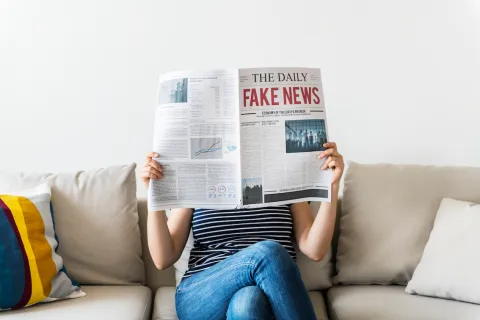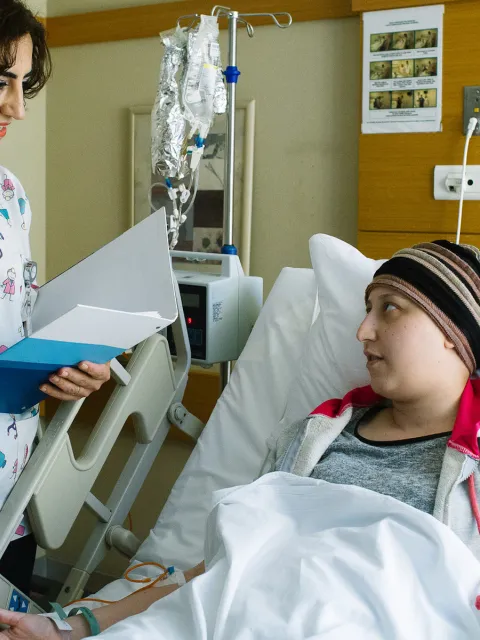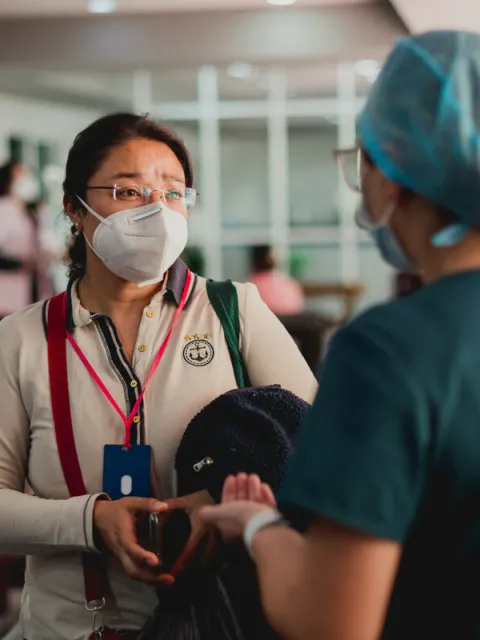Fake medical news and other costly misinformation on cancer
While relevant and good quality health information can be found on the internet, it is important to guard against fake, misleading and ill-informed medical advice that potentially poses significant risks.

Technological innovations and new research fuel discovery and can push medical advice, diagnosis and treatment in new directions. However, not all available health information follows this process, with some from questionable sources touting “miracle cures” or novel treatments without any verifiable, scientific evidence to support such claims.
A cancer diagnosis can be life-changing and highly emotional, engendering fear as well as the need for hope. This means that cancer patients and their families may be particularly vulnerable to pseudoscience and fake cancer news. Just before the outbreak of the coronavirus pandemic, the most viral health information on social media in the US in 2019 concerned cancer, unproven cures and vaccines, according to an analysis conducted by NBC News.
Indeed, social media provides a means for the uncontrolled, viral dissemination of information. Furthermore, content is personalised and filtered by algorithms, which amplifies users’ behaviours and may contribute to selective exposure to fake news.
The anti-vaccine movement is one example of misinformation, and one that can have serious consequences in cancer control, as vaccination against the human papillomavirus (HPV), for instance, can largely prevent several cancers, notably cervical cancer, and hepatitis B vaccines can help prevent liver cancer.
There are also many misconceptions surrounding certain vitamins and supplements often consumed for their “anti-cancer” compounds, without robust scientific evidence to support the claims. For example, shark cartilage, which was first promoted in the early 1990s as a supplement to treat cancer, and is still marketed today despite the lack of any supporting evidence.
“Fake medical advice can do more than provoke false hope, it can also be dangerous and compromise recovery. It can induce doubt about the validity of well-tested therapies or suspicion towards the medical community, sometimes leading to a reluctance to submit to conventional treatment that saves lives.”
– Dr Cary Adams, CEO of UICC
The case of complementary and alternative medicine
There are non-conventional therapeutic paths worth considering for people living with cancer, particularly for managing the side effects of disease (symptom management, psychological support and rehabilitation). The Anticancer Fund, for example, explores treatment options that it considers scientifically validated and evidence-based, but states nonetheless: “Several complementary treatments have been proven to help manage symptoms and improve overall quality of life. No alternative treatment has been scientifically proven to effectively treat or cure cancer.”
According to the National Cancer Institute, “complementary medicine is used along with standard medical treatment but is not considered by itself to be standard treatment" and "alternative medicine is used instead of standard medical treatment."
Cancer Council Australia (CCA) offers a similar assessment, highlighting the often “substantial gap between consumer beliefs around complementary and alternative therapies, and the evidence supporting their safety and effectiveness.” CCA also warns against the possibility of harm arising from the use of alternative or complementary treatments, which can sometimes adversely interact with conventional therapies, and urges patients to discuss their use with their medical practitioner.
The message here is clear: treatment options for cancer should be discussed fully with a trained medical practitioner who will be able to advise on what treatment options are appropriate to help a patient.
Fighting back against misinformation through regulation
Misinformation exists not only on social media but also in broadcast media, which further raises the issue of whether legislative action can help curb the dangers associated with the spread of information that has no evidentiary basis, especially for health and medical advice.
Consumer protection laws can be used to good effect against fraudulent cancer cure claims. In an Australian case about a health blogger who fabricated her account of her cancer diagnosis and beating it through natural remedies, the Federal Court ruled that the blogger had contravened Australian Consumer Law and was ordered to pay a significant fine.
This is undoubtedly a rare occurrence amongst a wealth of valid accounts of people’s experiences with cancer. It shows, however, how government regulation can help limit the risk of individuals engaging in the dissemination of misleading information. The Health Complaints Act passed in the Australian state of Victoria in 2016, for example, prohibits general health service providers from making unsubstantiated claims about curing cancer or being able to treat or alleviate the symptoms of cancer.
Last September, the Lancet Oncology published an article entitled “Acting on misinformation to prevent patient harm” on the expansion of the UK’s Cancer Act to regulate “clinically unproven diagnostic procedures, to prohibit dangerous treatments, and to introduce stricter controls of social media posts about purported cancer cures.” It was noted that the disruptions to cancer services as a result of the coronavirus pandemic “left a vacuum that those peddling unproven and unapproved tests and interventions have tried to fill.”
The reforms to the Cancer Act are aimed at limiting this threat to public health, in particular how to deal with fake cancer cure claims on social media. Indeed, while a current provision in the law has led to prosecutions of individuals guilty of advertising unproven cures for cancer, the Act was first drafted before the advent of the internet and social media and requires updating.
According to a report by Peter Roudik, Director of the Global Legal Research Center, on “Initiatives to Counter Fake News in Selected Countries”, several countries such as China, Egypt, France, Germany, Israel, Malaysia, and Russia are enacting more focused legislation that imposes sanctions in the form of fines and the removal of information identified as false. Other countries are seeking to address the problem through education. A media literacy initiative was launched in Kenya, for instance, while in Sweden, children are being taught about the dangers of fake news through a cartoon strip that illustrates what happens to the bear’s super-strength when false rumors are circulated about him.
How individuals can guard against health misinformation and fake cancer news
The National Cancer Institute, in partnership with the American Journal of Public Health, published in October 2020 a special issue on “Health Misinformation on Social Media”. The report examines the prevalence of misinformation, the consequences of exposure to misinformation, which populations are most vulnerable, how individuals process information and whether they assess quality. Importantly, however, the report also outlines some of the most effective ways to address misinformation on social media.
According to the American Council on Science and Health, the lack of technical terms or any attempt to explain methodology, a sensationalist aspect to the wording, statements with broad sweeping conclusions, and science and fringe facts presented on an equal basis and signs that the information should be considered with care.
Cancer.net by the American Society of Clinical Oncologists also provides tips on identifying fake news on social media, and UICC has previously published an article on the cancer misinformation, the “infodemic” of fake news on COVID-19 and how to identify misleading claims and advice, while exploring information that is reliable and potentially useful.
Despite the existence and dangers of fake medical advice, the natural inclination to search the internet for information cannot be ignored. Valid health information does exist that can assist patients and their families and allow them to engage in more informed discussions with their medical practitioner.
Indicators of fake news
- Lack of technical terms or any attempt to explain methodology
- A sensationalist aspect to the wording, statements with broad sweeping conclusions and poorly written text
- A questionably high level of certainty in the advice
- Science and fringe facts presented on an equal basis
- News that is particularly surprising, upsetting or seems "too good to be true"
What actions can be taken
- Evaluate the source of the article and verify the author’s credentials
- See if other reliable sources are reporting the same story
- Review the “why” behind the article (is it sponsored content, an opinion piece trying to sell unproven treatments and services?)
Sources: American Council on Science and Health and Cancer.net
Last update
Tuesday 29 April 2025
